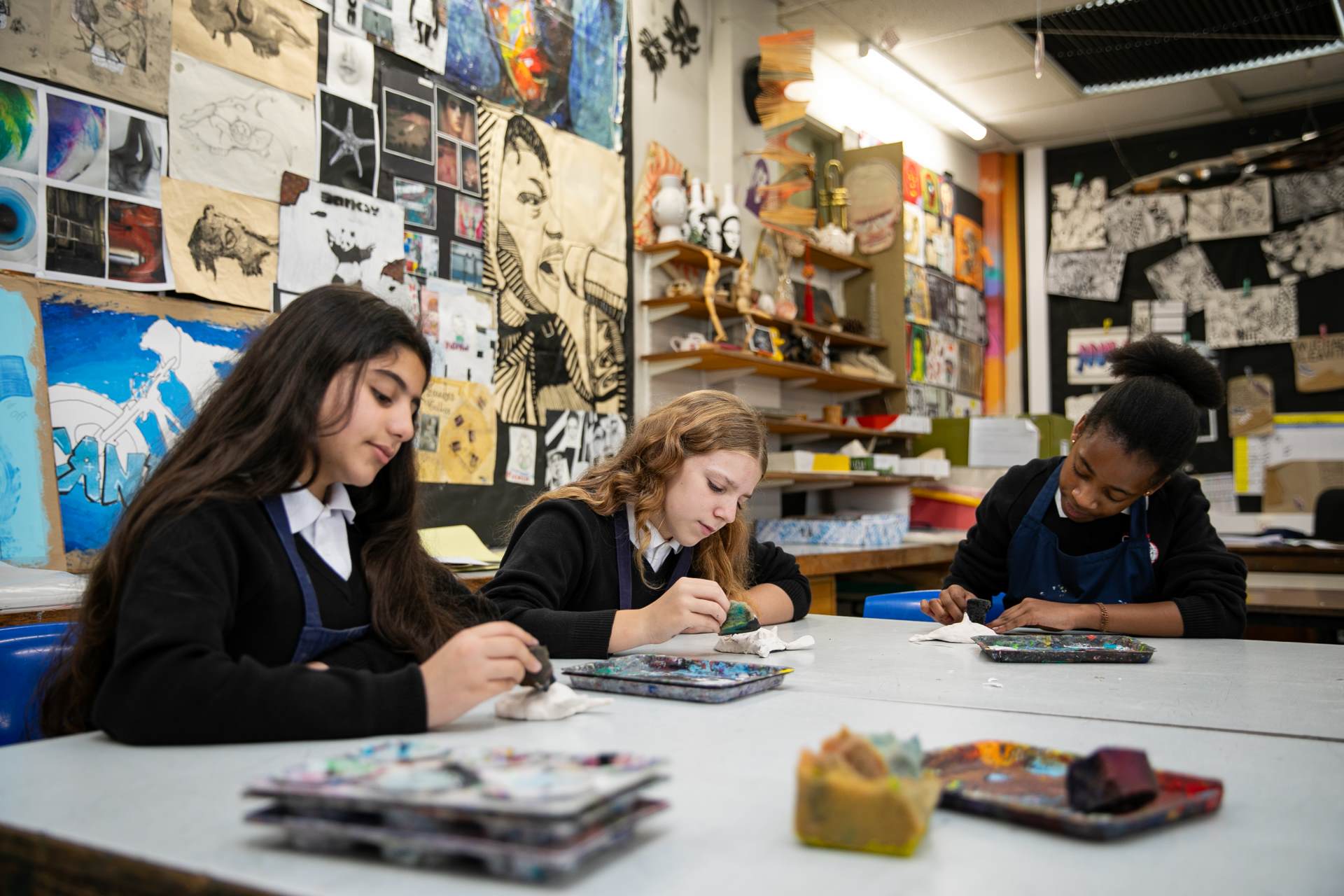Art & Design 
Head of Faculty: Mrs L Byam
Before humans could communicate and express themselves in the written form, they could draw and visually express both themselves and the world in which they lived. Art and Design is everywhere and is essential to our everyday lives, reflecting the society we live in and changing the way in which we perceive the world around us.
Key Stage 3
What will I learn?
Year 7:
Throughout the year, students complete projects based around the formal elements of: line, tone, colour, pattern, texture, shape and form. These projects teach students a variety of techniques and allows them to use and experiment with different materials.
Year 8:
Students study different art movements and the artists/designers within them. They also look at different cultures and their approach to Art and Design.
Projects have included: Cubism, Jasper John’s Lettering, Graffiti Art and Abstract Textile Art. Culturally, students have studied native American totem poles and Islamic tiles.
During the year students will complete a 'One Point Perspective' drawing.
Year 9:
All students start the year by drawing an A3 tonal portrait and continue to investigate portraiture by studying a variety of different styles, including Pop Art and Mixed Media.
In the Spring term students study Natural Forms and take part in different drawing workshops. This helps to prepare students who are considering taking GCSE Art as an option.
How will I be assessed?
At the end of each project, students are assessed on three different objectives: Researching, Developing and Producing. In the Summer term they will complete a practical exam.
Key Stage 4: GCSE Art and Design: Fine Art - Edexcel
What will I learn?
Students will explore and experiment with a wide range of media and processes which will include: Drawing, Painting, Printmaking, Collage, Digital Photography, ICT, Textiles, Ceramics, Mixed-Media and Sculpture. They will learn to investigate a theme thoroughly using sketchbook practice and analyse the work of relevant artists to inform creative decisions. They will develop a range of ideas based upon a set theme, experiment with appropriate techniques and evaluate the creative process throughout.
The first unit of work - Natural Forms, develops students’ understanding of the four different assessment objectives;
AO1 Contextual Studies and developing ideas
AO2 Experimenting with materials and techniques and refining work
AO3 Recording Ideas which involves drawing, photography and written accounts
AO4 Completion of the 'Final Piece' which must clearly link to all the other assessment objectives.
The second unit of work - I, Me Mine is more student led and encourages students to become more independent. Once again, students must complete the four assessment objectives above.
During the Spring term students are given their exam theme and they have 8 taught weeks to prepare. This involves completing work to meet the four objectives and taking a timed 10 hour exam which is held over two days towards the end of the Spring term.
How will I be assessed?
Students are given regular feedback throughout the course and this is recorded in students’ sketchbooks. At each reporting cycle students are given a grade that reflects where they are at that point. In Year 10, students take a practical mock exam in the Summer term. This involves the completion of an observational drawing that can then form part of the students’ coursework.
The GCSE course has two parts, coursework and the final examination. The coursework element is worth 60% of the final grade The course concludes with a ten hour timed examination in response to a set theme. This will be accompanied by a sketchbook which includes eight school-weeks’ worth of preparatory studies. This is worth 40% of the final grade at GCSE.
Where will this subject take me?
Within the visual arts, further study can lead into the huge area of the pure and applied arts: graphics, web design, product design, interior design, architecture, animation, film-making, photo-journalism, advertising, fashion design, illustration, dress-making, ceramics, set and props design, beauty therapy, theatrical make-up, glass design and public sculpture.
KS3 and KS4 Art and Design Curriculum Map

